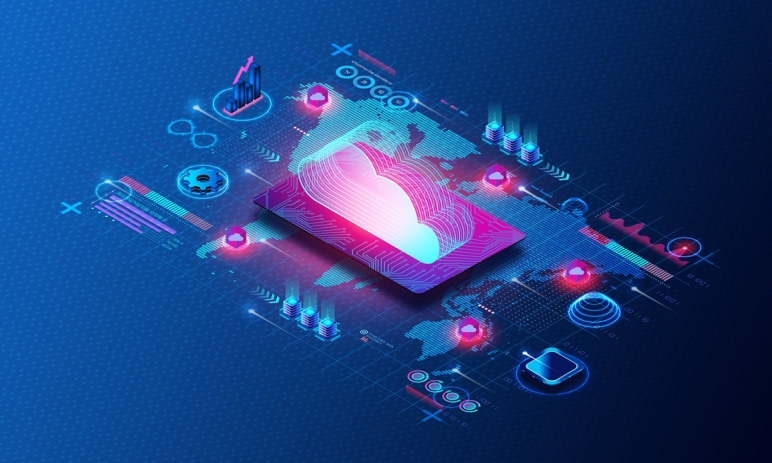BusinessTop 5 technologies that changed the healthcare industry


Stanislav Naborshchikov
Solutions Specialist
Table of contents
- Introduction
- Healthcare
- Drug development
- Data Analytics
- Patient decision-making tools
- Artificial intelligence
Share the article
Introduction
Virtual healthcare practice has changed our attitude toward the field of medicine. Although people are divided into those loyal to innovations in the field of healthcare and dissenters who are against the lack of personal contact with a doctor, technological innovations are breaking down barriers.
Innovations in medicine can be as simple as exchanging information between doctors and patients or as profound as robotic assistance in high-risk surgery. Moreover, remote surgery becomes possible when the patient and the doctor are separated by miles.
The latest technological advances are turning the activities of the medical industry and healthcare due to their dynamic changes.
Here are the five latest technological innovations that changed the healthcare industry:
Healthcare
Until the 1920s, most doctor-patient meetings took place at home. But when medicine became too complicated and confusing to conduct an appointment at home, state-owned medical offices began to appear in cities across the country. Soon, houses filled with doctors practicing independently became the epicenter of medical care. This fragmented approach to healthcare has been around for almost a century, largely unchallenged.
Telehealth protection (virtual assistance) has been around for several decades. However, until doctors faced a viral pandemic that forced them to close their offices, less than 1% of doctor-patient meetings were conducted virtually. As the pandemic skyrocketed in the summer of 2020, that number rose to 69%, turning some companies into major players in healthcare. As the deadly virus spread, video communication allowed doctors to provide adequate medical care without risking being in the same room with patients. This experience has opened the eyes of both doctors and patients, helping them realize that telehealth is more convenient, accessible, and capable of producing higher-quality results than one doctor receiving patients in the office.
Healthcare based on Internet communications allows doctors to provide medical care to patients at a distance in one place. Thus, people get access to medical care 24 hours a day, seven days a week, without delay and excessive burden on individual doctors. As a result, patients do not find themselves unnecessarily in a hospital or polyclinic, waiting hours for routine medical care, which costs several times more than it should. And with the appearance of the opportunity to contact your familiar doctor, whom you have known for a long time and whom you trust, virtual help can connect patients with the most competent doctor, and not only with the available one. In this sense, of course, the only leader is the domestic medical and educational project Bridge. After the pandemic, telehealth will continue to serve as an essential part of a value-based and results-based health system, significantly improving today's fragmented pay-for-services approach.
Drug development
No industry has felt more urgency during the coronavirus pandemic than drug manufacturers.
As a result, vaccine development technologies have accelerated at an unprecedented pace. Traditional biological approaches to vaccine development in the past required at least five years of development and testing before approval.
Vaccines against COVID-19 were created in a matter of weeks after researchers in China published the exact genetic code of the virus. Scientists quickly devised a kind of "shortcut," using an RNA messenger created in the laboratory to transmit a unique set of instructions to the human body. These instructions led to the production and replication of specific virus-associated proteins— just as a computer virus instructs an operating system to make copies of itself. In response to these foreign proteins, the patient's immune system produces antibodies that cause immunity.
Recently, epidemiologists have identified a significant coronavirus mutation that can significantly affect the effectiveness of current COVID-19 vaccines and the number of people needing immunization to achieve collective immunity. Suppose this mutant strain is at least partially resistant to modern vaccines. In that case, drug manufacturers expect that they will be able to change the composition of the vaccine and modify the injected mRNA accordingly. Based on previous approvals, the government could have permitted the use of drugs in emergencies earlier, saving thousands of lives.
Data Analytics
The coronavirus has shed a bright and unflattering light on chronic diseases. According to mortality reports, people who died from COVID-19 had a chronic illness, and 88% had two or more. Health experts have long understood the consequences of chronic diseases such as diabetes and heart disease. In the country, they account for 7 out of 10 deaths and almost 75% of total healthcare costs.
And yet, before the pandemic, these types of diseases were considered by our compatriots as something that they simply had to live with, for example, gravity or movement. This misconception has begun to change as a result of the current pandemic. The country is approaching its darkest milestone – hundreds of thousands of deaths from COVID-19. The growing death toll helps to view chronic diseases not as a common nuisance but as an accomplice guilty of death and destruction, like the virus itself.
Fortunately, technology provides a solution. To explain this, consider the threat of hypertension, the #1 cause of stroke and kidney failure. Doctors can help 90% or more patients control the problem and reduce the likelihood of life-threatening complications.
How do they do it? Technology and science play a key role. Most doctors, especially specialists, focus on treating strokes, kidney failure, and heart attacks caused by high blood pressure (through surgery or expensive drug treatment programs). But the most effective approaches include prevention and optimal treatment of diseases, which is facilitated by comprehensive medical information systems and evidence-based treatment algorithms. Under these conditions, systematized records of medical information about patients and the population stored electronically in digital format are carefully analyzed, giving doctors clear and practical recommendations for treating patients with chronic conditions.
In the past, pandemic planning and preparation focused primarily on how to treat the virus itself. In the future, if a new pandemic threatens the health of millions of people, data analytics will allow more doctors to maximize the health of patients with chronic diseases, thereby reducing mortality before a vaccine becomes available.
Patient decision-making tools
In 2020, our country applied a universal approach to the fight against coronavirus. As a result, we restricted some groups of people too much, such as pupils and students, and did not sufficiently protect others, particularly the elderly in nursing homes. The consequences were fatal.
A similar arrogant mistake happens in medical institutions, where doctors cannot personalize their clinical approaches and treatment methods for patients. As a result, they overestimate one thing and underestimate the other. Whether patients have high blood pressure or atrial fibrillation, their doctors will probably see them all regularly, usually every three months. This model needs to make more sense.
Patients with chronic disease need to know whether they should continue taking the same medications in the same doses or change them. If nothing needs to be changed, they may not need to visit doctors more than once a year. On the contrary, if something is wrong, they need to see a doctor within a few days, not months. The technology offers a better and more accurate approach.
Modern health monitoring devices can reliably measure blood pressure, heart rate, blood oxygen content, blood sugar levels, and other physiological signs. But without interpreting the data for the user (and without providing medical advice), the information has no particular value.
The next generation of home monitoring apps will solve this problem by comparing patient data with the most recent treatment recommendations, informing patients whether everything is OK (and there is no need to see a doctor) or whether immediate medical attention is required. Why isn't this happening today? It's not that the most prominent companies lack the technology or know-how to produce such a device.
They just don't want to take medical responsibility in case of a fatal mistake. In the future, the opportunities to improve quality and reduce costs will be too great for companies to resist. It remains to be seen who dares to be the first.
Artificial intelligence
Artificial intelligence (AI) has been discussed for many years as a "revolutionary tool" in medicine. And yet AI has not improved healthcare.
It can't last that long. The COVID-19 crisis has highlighted a problem for which AI offers a unique and effective solution. AI can help doctors identify and solve health problems faster. Doctors can receive real-time notifications about patients' conditions and much more.
Did you like the article?Find out how we can help you.
Matt Sadowski
CEO of Mobile Reality

Related articles

15.04.2024
Top Blockchain Conferences That You Cannot Miss in 2024
Top blockchain conferences in 2024 around the world. Unique selection by the Mobile Reality team!
Read full article

15.04.2024
Mobile Reality at New York Fintech Week and Fintech Conf
Join Mobile Reality at New York Fintech Week, April 8-11, to explore fintech, proptech & blockchain innovations with industry leaders. #FintechNY
Read full article

15.04.2024
SaaS Architecture Guideline: Multi Tenant vs Multi Instance
Learn the differences between Multi-Tenant and Multi-Instance SaaS Architecture. Explore the benefits and drawbacks to make an informed decision.
Read full article